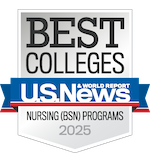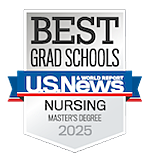Hospital-to-homecare videoconference handoff improves communication, coordination of care, & patient/family engagement
Project Background
Transitions of care are a time of vulnerability for patients and family/caregivers, and can result in negative outcomes such as fragmented care, medication errors, avoidable readmissions, and patient/nurse dissatisfaction. During transitions, innovative patient-centered handoffs can improve safety, quality of care, and the patient experience. Through the use of technology and a structured face-to-face dialogue, the patient and family can be engaged with nurses in an efficient and effective handoff across settings.
Project Purpose
The purpose of this project was to determine the feasibility and effectiveness of videoconference handoffs between inpatient, care management and homecare nurses, and the patients/families during the transitions from hospital to homecare, in an effort to improve communication and coordination of care.
Project Methods
Videoconference handoffs were conducted for two months with patients transitioning from two pediatric inpatient units to the hospital-based homecare agency. The inpatient care management, bedside and homecare nurses, and patient/family connected through a secure cloud-based videoconferencing platform. Using a checklist, participants discussed the patient’s status, safety concerns, interventions, responses to treatment, plan of care, and what the patient/family could expect at home, as well as coordination of equipment/supply needs and post-discharge visits.
Project Outcomes
Videoconference handoffs (n=10) were found to be feasible and improve communication, coordination of care and patient/family engagement during transitions from hospital to homecare. Families (n=9) rated their experience as good/ very good (89%). All reported it was reassuring to meet the visiting nurse, and questions/concerns were addressed. Nurses who participated in the handoff reported technology video and sound (76%), communication (96%), patient/family engagement (82%), ease of process (84%), overall experience (92%) were good/very good. The three pediatric visiting nurses received the information they needed and found coordination with the case manager helpful (100%). Post-pilot, all nurses and leadership stated the videoconference handoffs should continue with minimal modifications.
Project Implications
The feasibility pilot addressed the limited literature regarding videoconference handoffs by providing initial evaluation of the effectiveness, acceptability, implementation and practicality of videoconference handoffs. Videoconference handoffs are feasible and effective during transitions from hospital to homecare. Broader implementation across settings and populations has the potential to positively impact clinical outcomes, patient safety, and patient/nurse satisfaction.





